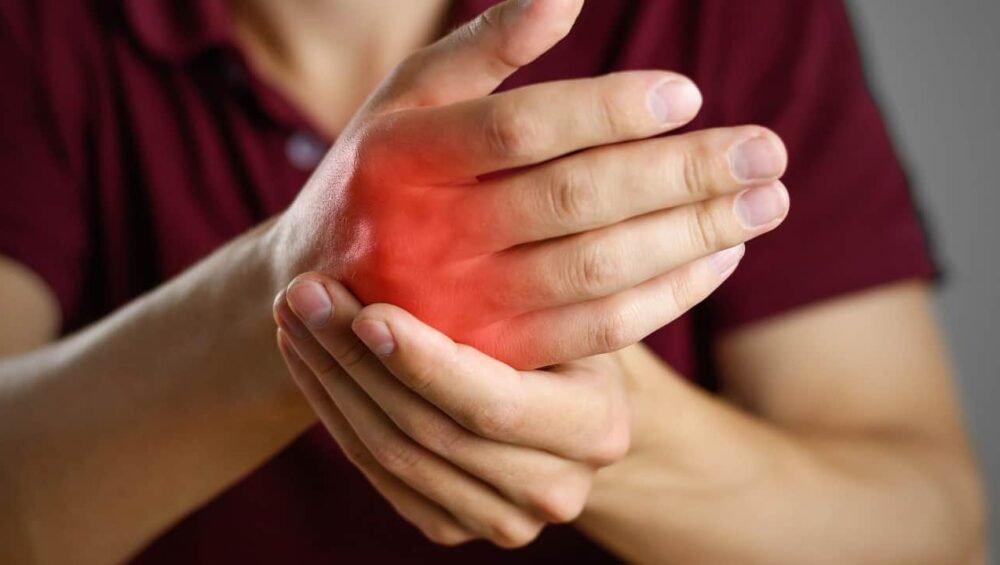Massage for arthritis is a step-by-step guide designed to bring fast and effective relief from pain. It is a complementary treatment and can be very helpful for arthritis. It not only eases discomfort but offers benefits for overall health. Full-body massage techniques increase the ability of the body’s natural painkiller called endorphins through different types of massage for arthritis. Remedial massage is good. The massage not only lessens the stiffness and pain but also increases mobility.
Nowadays, massage is increasingly being recommended by health providers. They are using it as a part of physiotherapy to help patients recover from chronic illness. Incorporating massage into a pain management routine can provide relief and improve quality of life.
Trained massage therapist gently rubbed and kneaded the body with their hands. The therapist uses both stretching and pressure in rhythmic flow to release tension in the specific muscle. One can easily learn massage techniques and can do massage for others and oneself.
Massage therapy can become more effective and safe when it is customized according to the physical build and health status of an individual. Keep one thing in mind only a registered massage therapist can support the arthritis treatment. Learn more about the types of arthritis that massage therapy can help relieve.
Therapeutic Methods of Massage for Arthritis
Five full-body massage techniques with essential oils such as Lavender, Tea Tree, Red Oil, Eucalyptus globulus, Peppermint, Cedarwood, Clove bud, Sage, Rosemary, and Cinnamon leaf. At least one of these essential oils, or combinations of oils, will help ease your arthritis by massage types:
1. Relaxation or Therapeutic Touch
It is important to respect the perspective of the patient who disagrees with the use of medicine versus spa while considering the benefits of both approaches. In that case, the practitioner will not go for a whole body massage he will focus on the problem area and the region around that body part.
He will try to figure out what is hurting and causing the discomfort. The therapist will judge the level of the patient’s pain and then apply the pressure accordingly. The objective is to lose the tight muscle by kneading the muscle using long and circular strokes. Therapeutic or relaxation massage helps to improve the blood flow through the affected muscles and gives relaxation from pain and stress.
2. Remedial or Deep Tissue Massage
The demands of daily, hectic routines have become a source of stress and discomfort. A primary reason for muscle stiffness and tension. Massage is very helpful in improving blood flow and relieving tension in stiff muscles. Muscle damage due to an injury is treatable with deep tissue massage.
The therapist applies slow and strong strokes with the palm of their hand or the forearm to reach the muscles and deeper tissues. The objective is to relax and move the muscles freely. It is achieved by applying deep strokes as they raise the temperature of the soft tissues.
Deep tissue massage serves as an effective technique for improving muscle recovery. On the other hand, remedial massage adopts a more targeted strategy to address specific issues in the body.
The primary distinction between deep tissue and remedial massage is found in the intensity of pressure utilized. If someone is experiencing pain, the remedial massage therapist will identify the problem. They will manage the symptoms by treating them accordingly.
The issue will determine the necessary amount of pressure to be applied. Patient comfort is important during treatment. An experienced therapist utilizes a variety of remedial full-body massage techniques to help relieve issues like sports injuries, muscle cramps, and pain in the affected areas.
3. Lymphatic Touch Therapy
The lymphatic system’s function is to drain the excess fluid from the tissue. This functionality protects us from infection. The system of delicate tubes requires the lymph fluid to flow around the body.
Lymphatic massage removes the inflammation due to a medical condition or a blockage in the lymphatic system and improves overall wellness. This type of drainage massage has a potential health benefit. It stimulates the lymphatic system and has become a popular massage. It promotes the natural flow of lymphatic fluid called lymphedema.
This massage involves using gentle pressure with the entire hand. No requirement for special body posture for this. A person may use this technique at home or may seek help from a therapist. The massage movement should only affect the skin.
Avoid massaging the area of the body that has undergone cancer, swelling, or infection. It does not require the use of any lotion or oil. There will be no sign of pain or skin redness as the and strokes the skin very lightly.
In short, Lymphatic drainage massage is very suitable for reducing swelling and improving blood circulation. Its usage frequency may depend upon the patient’s condition.
4. Shiatsu Therapy for Arthritis
Do you want to relieve yourself from muscle, bone, and joint pain? Then shiatsu could be the solution which you require the most. Shiatsu is a traditional Japanese massage therapy that encompasses ancient Chinese acupuncture meridian theory. SHI means “Finger” and ATSU means “Pressure”.
Meridians are channels, just like the network of veins and arteries, along the body through which Qi (energy) flows. Acupuncture means pressure points. Shiatsu is an innovative message technique in which a practitioner manipulates the pressure points of the body with their fingers to balance the body’s energy flow.
It’s certainly a treatment by touch, where abnormalities are detectable through physical examination. This method is useable to both diagnose and treat problems. The first step is to identify the problem area and release the blockage.
The therapist achieves this target by applying targeted pressure at the acupuncture points of the body. The second step is to relieve tension in the affected muscle with the help of thumbs, fingers, and the heel of the palm.
Finally, the execution of gentle finger tapping is done to activate and enhance the nerve function. Shiatsu therapy goes beyond solving muscle, joint, and bone problems; it also supports body balance, blood pressure control, digestion, and other health benefits. If somebody is suffering from a severe medical condition then he/she must consult the doctor before receiving this treatment.
5. Reflexology Massage
Initially, the body often requires warming before starting any arthritis massage. Warm soothes stiff muscles, increases blood flow, alleviates pain, and promotes healing. According to Chinese belief energy called Qi flows through the human body.
When this energy blocks up, individuals may experience tension and unease. Our hands, feet, and ears have pressure points that correspond to different body parts. Applying gentle pressure or stimulation to specific points on the feet or hands can create effects on other body organs.
You Might Like to Read: Top Causes of Knee Pain: Symptoms and Treatment Options
Reflexology is a safe and complementary treatment. This type of massage is not just confined to reducing stress and enhancing mood; it has also been found to support the immune system, aid in combating cancer, correct hormonal imbalances, improve digestion, address nerve-related issues, and alleviate arthritis symptoms. To further complement these effects, consider incorporating regular exercises for arthritis into your wellness routine.
Although this is not a scientifically proven treatment, it strictly requires a professional reflexologist. People who received reflexology massage reported a soothing, comforting, and calming experience.


